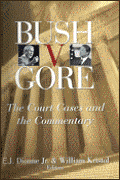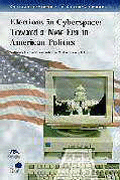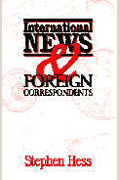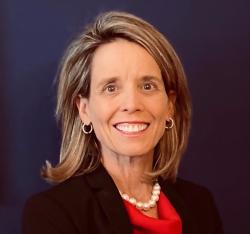The presidential general election is already in full swing. Although President Bush initially sought the safe haven of the Rose Garden, he abandoned his claims that there would be “plenty of time for politics” on Feb. 23 when he kicked off his bid for re-election with a speech to the National Governors’ Association.
But make no mistake about when this campaign began. The White House has kept its eye on the ball since Day One, conducting a “permanent campaign” even better than the one mounted by President Clinton and his staff during their first term in office.
What is unusual about the Bush team, despite their public disavowals of electoral motives, is that they have brought the permanent campaign to new heights.
A review of Bush’s domestic travel over the first three years illustrates their keen attention to politics. For starters, he has traveled more extensively than any of his predecessors, taking 416 domestic trips during his first three years.
To place this in a more meaningful context, Bush out-traveled President Clinton (302 domestic trips) who, by many accounts, was thought to be the most political of presidents.
More interestingly, Bush has spent the bulk of his time in swing general election states — the 16 states that were each decided in 2000 by the narrowest of margins — 6 percent of the vote or less.
In his first year, 36 percent of Bush’s domestic travel consisted of visits to swing states; in year two, 45 percent; in year three, 39 percent.
By comparison, Clinton focused his travel in swing states 28 percent of the time in year one, 33 percent in year two and 39 percent in the third year.
It’s important to note, however, that one of Clinton’s swing states was Virginia, a state presidents often visit frequently because of its proximity to Washington.
If you substituted the next most competitive state, Tennessee, for Virginia, Clinton’s travel to swing states would drop to 22 percent in year one, 27 percent in year two, and 31 percent in year three.
In short, Bush has out-traveled and out-targeted Clinton.
Political travel as a measure of campaigning is but one means of looking at Bush’s re-election-related activity. Another example can be found in fund-raising.
The Bush-Cheney ’04 Committee began raising money in May 2003 and may rake in $200 million before the end of this summer.
This success partially reflects Bush’s efforts to raise money for Republican candidates and party committees. For example, in his first two years in office, Bush shattered all records for money raised by a sitting president.
One post-midterm-election account reported that Bush brought in more than $144 million from 67 receptions in 34 states and the District of Columbia. This politicking helped his party and, at the same time, expanded his own base of financial support.
Bush is merely following the examples set by his Democratic and Republican predecessors.
Beginning with the Nixon administration, the White House initiated what has become an ongoing accumulation of outreach offices designed to enhance the president’s electoral prospects (e.g., the Office of Communications, Political Affairs, Public Liaison, Intergovernmental Affairs, and most recently, the Office of Strategic Initiatives – a Bush invention).
Along with a host of unexpected duties that crop up on a daily basis in the West Wing, these entities keep their political antennae attuned to key constituencies and developments that may affect the president’s electoral prospects.
In addition, the hiring of pollsters and political consultants to advise the president on an ongoing basis has only accentuated the White House focus on politics, resulting in the now familiar phrase, “the permanent campaign.”
So while many observers lamented the start of a Democratic nomination process that began early in 2003, they would be wise to acknowledge that the president’s campaign began even earlier, January 2001.
A lesson learned by Republicans and Democrats alike is the importance of the permanent campaign. It has all but displaced the old Rose Garden Strategy.








Commentary
Op-edPermanent Campaign Brushes Aside Tradition
March 30, 2004